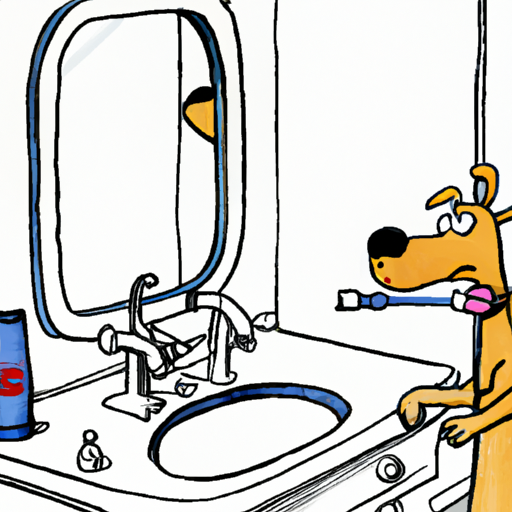As a caregiver, you’re always looking out for your loved ones. And yes, that includes your four-legged friends. When your dog’s breath gets a little too “ruff,” fear not. Below are some helpful tips and tricks to ensure your fur baby’s breath stays as fresh as a daisy.
1. Regular Dental Check-ups
Just like humans, dogs require regular dental check-ups. These can prevent oral disease and help keep your dog’s breath fresh. Check with your vet to understand how often your dog needs to have its teeth checked.
| Age | Dental Check-up Frequency |
|---|---|
| Puppy | Every 3-6 months |
| Adult | At least once a year |
| Senior | Every 6 months |
2. Brushing Your Dog’s Teeth
Yes, you read that right. Brushing your dog’s teeth can be a game-changer. It helps remove plaque and tartar buildup, which are often the culprits of bad breath. Here’s how you can do it:
- Choose a toothbrush and toothpaste designed specifically for dogs.
- Start slow and let your dog get used to the toothbrush and toothpaste.
- Brush your dog’s teeth in a circular motion, focusing on the gum line.
- Reward your dog after brushing to create a positive association.
3. Diet and Chew Toys
Believe it or not, your dog’s diet can have a significant impact on its breath. Avoid foods with strong odors and consider dog-specific dental treats.
- Dry food and chew toys can help clean your dog’s teeth.
- Dental chews are designed to reduce plaque and freshen breath.
- Look for treats that are approved by the Veterinary Oral Health Council (VOHC).
4. Hydration
Keeping your dog well-hydrated is crucial. Dehydration can lead to dry mouth, which can cause bad breath. Ensure your dog always has access to fresh, clean water.
5. See the Vet
If you’ve tried everything and your dog’s breath still smells, it’s time to see the vet. Bad breath can be a sign of an underlying health issue, such as dental disease, diabetes, or kidney disease.
Frequently Asked Questions
Q: How often should I brush my dog’s teeth?
A: Ideally, you should brush your dog’s teeth daily. However, if that’s not possible, aim for at least three times a week.
Q: Can I use human toothpaste to brush my dog’s teeth?
A: No, human toothpaste can be harmful to dogs. Always use a toothpaste made for dogs.
Q: What if my dog doesn’t let me brush its teeth?
A: You can try using dental treats or toys designed to help clean your dog’s teeth.
Q: How can I tell if my dog is dehydrated?
A: Signs of dehydration in dogs include dry nose and mouth, loss of appetite, and lethargy. If you suspect your dog is dehydrated, contact your vet immediately.
Remember, as a caregiver, your dog’s health and well-being are in your hands. Regular care and monitoring can go a long way in ensuring a happy, healthy life for your furry friend.



